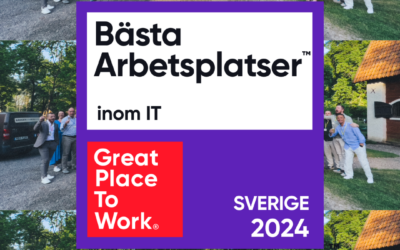There’s something special about robots. From Curiosity on Mars to whatever Boston dynamics are up to, robots always seem to amaze me. In the food industry, robots are used to monitor and analyze crops, sort, and filter vegetables, ensuring safety, packaging, delivery, and cooking. And in the past years, a new type of robotic has gained popularity, Robotic Process Automation, RPA.
One kind of robot commonly used in Agriculture.
What is RPA?
RPA is software that can be easily programmed to do basic, repetitive tasks across applications that previously required humans to perform. Some of these tasks include addressing queries, making calculations, maintenance, and performing transactions. RPA enables you to create your own software robots to automate any business process. Your robots are set up to perform the tasks you assign and control. Just show your bot what to do, and leave them to it.
Two types of RPA
There are two types of RPA, unattended and attended. Unattended is when the robot performs a workflow from start to finish without any stop. This is often used in behind-the-scenes processes like server environments. Attended, often called Robotic Desktop Automation, is when the robot performs a workflow with pauses to wait for human interaction, like making a decision. This is most commonly used in the employee’s own desktop.
One is not better or more sophisticated than the other. And both can be a perfectly good solution.
Why RPA?
Besides the fact that you’ll have your own personal robot performing time-consuming tasks flawlessly for you, without ever taking a break, RPA comes with a few other key benefits.
RPA Increases productivity.
One of the most important advantages of using RPA is increased productivity. Automating tasks like data entries, database merging, or moving data from one place to another, can save huge amounts of time.
RPA lets you focus on what’s important.
RPA is not going to take away anyone’s job. Instead, it enables you to let go of trivial mundane tasks and focus on more intuitive work. Like innovation in important areas such as customer service, and product development.
RPA means a higher quality of work.
To err is human. Filling out form after form, moving data from one spreadsheet to another, mistakes are prone to happen. The problem is that it affects your data, analysis, and reports. Using RPA, the work will be done faster, better, and with zero errors.
RPA works in your existing IT systems.
One of the biggest advantages of using RPA is that it doesn’t force you to replace your existing systems. Instead, RPA improves the operational quality of the systems you already have in place.
RPA is versatile
RPA is applicable across different companies and can perform a wide range of tasks. Any process that is rule-based and can be defined and is repeatable makes an ideal automation candidate.
Robot sorting pasta.
RPA in the food & beverage industry
One of the most important things in the food and beverage industry is food safety. A single food safety-related event can create tremendous risk, causing harm to customers, brands, and eventually trust. RPA can be used together with Internet of Things sensors to feed data into other ML and AI tools to monitor when oil should be changed in fryers, automate temperature measurements of food, and understand things like how many times a door has been opened. This helps optimizing cleaning schedules and gain real-time, trusted insights into food safety and sanitation conditions. Besides benefitting from faster, more streamlined operations and all other advantages of using RPA.
How we use RPA
At Elvenite we mainly use RPA to help us with large volume tasks or processes involving lots of mouse clicking. One example is where we update prices or add new goods into the ERP-system for Coop Värmland. Letting a robot do the work instead of a human enables us to focus on more intuitive work, like innovation.
How to start using RPA?
1. Do a workshop together with your colleagues to find processes to automate. Anything involving moving data from one system to another is a great candidate.
2. Plot the different processes in detail and evaluate where automation can generate the most value.
3. Start automating. There are lots of great programs and platforms you can learn fast by just playing around. One is UI-path, but there are many others. Try out a few to find what suits your situation best.
4. Use google and youtube to learn and solve whatever issues might arise. There are lots of great tutorials and guides online.
Good luck and remember, a great and detailed map of the different steps in a process helps a lot in the implementation!
Like what you read?
Hang out with us for more insights👍
Check out our other articles!
Elvenite rankas som en av IT-branschens bästa arbetsplatser 2024
Elvenite rankas som en av IT-branschens Bästa Arbetsplatser 2024 Elvenite har utsetts till en av Sveriges Bästa Arbetsplatser inom IT 2024, en prestigefylld utmärkelse från Great Place To Work®. Elvenite rankas på plats 15 av 25, vilket är en hyllning till vår...
När mjölken flödar stabilt, året om
När mjölken flödar stabilt, året omVisste du att mjölkproduktionen svänger kraftigt under året? Medan vi konsumenter köper mjölk i samma takt oavsett säsong, står mejerier som Valio inför stora utmaningar. Under sommaren flödar mjölken, men när vintern kommer minskar...
Så använder vi word embeddings och AI: från bordsplacering till dataanalys
Så använder vi word embeddings och AI: från bordsplacering till dataanalysAtt göra den perfekta bordsplaceringen är en utmaning vi alla kan relatera till, oavsett om det är en privat fest eller ett större företagsevent. Vågar jag sätta Anna bredvid Henrik eller kommer...





